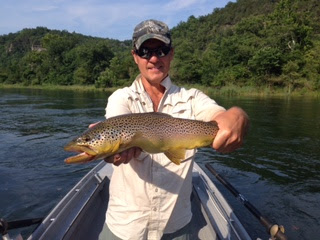With artificial flies, Fly
fishing hooks are baited rather than live bait. Extensive knowledge of the fish
you are seeking, precision, and patience are required to be a good fly fisher.
It is a sport that at any age can be enjoyed. To perfect the art, it will take
a lifetime although you can pick up the basics in an afternoon.
Based on the time of day, the
kind of water you are fishing in, and even the type of fish you are after, the
techniques and equipment you use for fly fishing in Arkansas for trout
must be carefully chosen.
Flies come in a variety of
general classes Regardless of whether you tie your buy or own them.
As either attractive or imitative,
Flies are also classed.
To resemble a certain type of
creature fish prey on Imitative flies are tied: land animals that have fallen
into the water, nymphs or insect larvae, adult insects, smaller fish or worms,
or even crustaceans.
prey do not necessarily resemble Attractive
flies, but instead through long wriggling fibres (streamers), shiny and bright colors
work by provoking the fish's instinctive attack reaction, or as they are pulled
through it, you can create turbulence in the water.
You’ll need to learn to cast once
you've equipped yourself with your fly fishing tackle. It does not frighten the
fish and appears natural as the goal is to land the fly as lightly as possible
and so with the water, the fly drifts naturally. You can follow the white river fly fishing guides.
Raising the rod smoothly overhead
until almost vertical is involved in the basic fly cast and there are dozens of
variations although the snapping it forward a short distance. Putting the
weight of the line on top of the fly, you will want to use a cast such as the
tuck cast for wet flies, which so it sinks quickly.
Specialized
casts, such as the Spey, sidearm, and roll casts are also there, which are meant
for conditions that does not allow for a regular cast, such as crowded areas,
overhanging trees, or high-walled streams.



